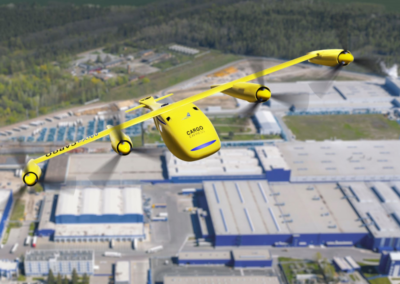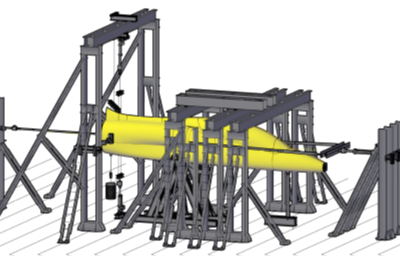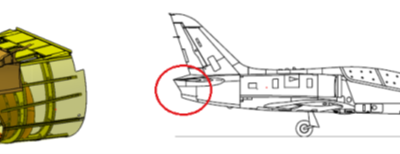Project Title: Certification of adhesive bonded repairs for Primary Aerospace composite structures
Project Description:
The increasing adoption of composite materials to produce aeronautical structures has opened new horizons and research fields, both for civil and military applications. These materials offer considerable performances, regarding the strength and weight-saving, however, they require complex procedures and technologies for damage identification and repair.
The PATCHBOND II project deals with the certification strategy for bonded repairs. This type of repairs of composite structures offers many advantages compared to conventional bolted repairs, for instance, through bonded repairs, the original strength and stiffness of a structure can be restored. In addition, thin laminates of sandwich structures can be repaired instead of being replaced, something which is hardly possible using a bolted repair.
In a war or crisis situation, a fast bonded repair will be essential for the operability of the platform, however, the new bolt-free approach is also believed to be both relevant and cost-effective in peace time. Nevertheless, for an adhesively bonded repair of a critical/primary composite structure, certification is currently only possible on a case-by-case basis and not on a general basis. This is mainly due to the present adhesive bonding methods applied. Within the PATCHBOND II project, a new technology will be developed to create a damage tolerant repair method, also employing in-service structural health monitoring as part of a certified repair approach.
Objectives
- The target of the project is to set the guidelines and provide analyses of bonded repairs to confirm the damage tolerant design philosophy. This includes an initial assessment of the criticality of a damaged composite structure, along with a no growth/slow growth design approach in view of new certifiable large composite repairs, involving bigger bonded repair size limits compared to current certification policy.
- Technology for in-service health monitoring of the repair will also be developed.
The PATCHBOND II project is a follow-up activity of the PATCHBOND project and it is also using the “crack stopper” technology developed within the previous EU BOPACS project.
The project involves several partners from Finland, Germany, Norway, The Netherland, and the Czech Republic, among them, the Aviation division of VZLU AEROSPACE is involved with doctors Roman Růžek, Radek Doubrava and Martin Kadlec. Their contribution is devoted to methodology and experimental certification of the structures, modelling of the delamination and debonding propagation using the finite element method and a structural health monitoring.

Impact simulation on sandwich panel

Repair demonstrator
ID CODE: B.PRJ.RT.670
Project Period: 06/2020 – 06/2025
Project Participants:
- Patria, VTT,.Tampere University (TAU), FINLAND
- Politecnico di Milano (POLIMI), ITALY
- Airbus DS, WIWeB, University of Stuttgart (USTUTT), GERMANY
- Norwegian Defence Research Establishment (FFI), Norwegian Defence Material Agency (NDMA), Light Structures, FiReCo, NORWAY
- NLR, KVE, Fokker Services, THE NETHERLANDS
Principal Investigator For VZLU AEROSPACE:
- Dr. Ing. Roman Růžek, ruzek@vzlu.cz
- Ing. Radek Doubrava Ph.D, doubrava@vzlu.cz
- Ing. Martin Kadlec, kadlec@vzlu.cz




